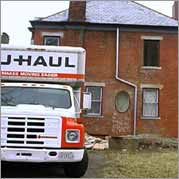 Click on images to enlarge
Click on images to enlarge
Dante Capaldi of the Capaldi Corporation has asked for a neighbourhood meeting regarding parking for the tennants of the Metropole Lofts at 917 Walker Road. Specifically he is requesting parking on the sidewalk along the north side of the building (South side of Niagara Street). Your input is very important so please make a point to attend. Proposed date for the meeting is Saturday May 6 at 1:00 PM at Big Tony's Restaurant. Thank You!
April 18, 2006
Neighbourhood Meeting Requested
Posted by
News from MoM
at
4/18/2006
11
comments
![]()
April 10, 2006
An Old Walkerville Easter Stroll?
When was the last time you had some simple fun for Easter? Don the Bonet, doll up, shine the spats and take a leisurly stroll through the neighbourhood. Greet your friends and neighbours, have a picnic or a plain old walk to the park.
What better way is there to brush off the worries of the week and welcome in a new Spring. What a way to savour some fresh air and all of those wonderful things that the new season brings. What a way to make a perfect day with family and friends. What a way to reaquaint yourself with Old Walkerville. What a way indeed.
Why don't you make a note and stick it on the fridge. It should read: "Have a happy Easter!"
Posted by
News from MoM
at
4/10/2006
0
comments
![]()
April 8, 2006
Skool News

This from Criss Ann Sandre:
After 6 months and endless hours of preparation,
I am proud to announce that the King Edward Public School team blew the competition away
and won 1st place in the Division II – Problem III - Odyssey of the Mind regional competition, in Petrolia, this weekend!
Posted by
News from MoM
at
4/08/2006
0
comments
![]()
April 3, 2006
What is Gentrification?
Does Any of This Sound Familiar?
Change is constant in modern city life. So what do we mean by "gentrification?" How does it happen? Who wins and who loses? What comes next? Writer and urbanist Benjamin Grant explains.
POINT OF VIEWBeyond Gentrification
INTERACTIVE MAPSA Tale of Three Cities
Flag Wars tells the story of what happened to the Olde Towne East community in Columbus, Ohio when the neighborhood went through the process of gentrification in the mid-to-late 1990s. For much of the twentieth century, urbanists, policymakers, and activists were preoccupied with inner city decline across the United States, as people with money and options fled cities for the suburbs. But widespread reports of the American city's demise proved premature. Beginning in the 1970s, urban life slowly began to regain prestige, particularly among artists and the highly educated. By the turn of this century, many cities were thriving again, and their desirability among the wealthy and upwardly mobile was putting intense pressure on rents, real estate prices, and low-income communities.
What is Gentrification?
Gentrification is a general term for the arrival of wealthier people in an existing urban district, a related increase in rents and property values, and changes in the district's character and culture. The term is often used negatively, suggesting the displacement of poor communities by rich outsiders. But the effects of gentrification are complex and contradictory, and its real impact varies.
Many aspects of the gentrification process are desirable. Who wouldn't want to see reduced crime, new investment in buildings and infrastructure, and increased economic activity in their neighborhoods? Unfortunately, the benefits of these changes are often enjoyed disproportionately by the new arrivals, while the established residents find themselves economically and socially marginalized.
Gentrification has been the cause of painful conflict in many American cities, often along racial and economic fault lines. Neighborhood change is often viewed as a miscarriage of social justice, in which wealthy, usually white, newcomers are congratulated for "improving" a neighborhood whose poor, minority residents are displaced by skyrocketing rents and economic change.
Although there is not a clear-cut technical definition of gentrification, it is characterized by several changes.
Demographics: An increase in median income, a decline in the proportion of racial minorities, and a reduction in household size, as low-income families are replaced by young singles and couples.
Real Estate Markets: Large increases in rents and home prices, increases in the number of evictions, conversion of rental units to ownership (condos) and new development of luxury housing.
Land Use: A decline in industrial uses, an increase in office or multimedia uses, the development of live-work "lofts" and high-end housing, retail, and restaurants.
Culture and Character: New ideas about what is desirable and attractive, including standards (either informal or legal) for architecture, landscaping, public behavior, noise, and nuisance.
How does it happen?
America's renewed interest in city life has put a premium on urban neighborhoods, few of which have been built since World War II. If people are flocking to new jobs in a region where housing is scarce, pressure builds on areas once considered undesirable.
Gentrification tends to occur in districts with particular qualities that make them desirable and ripe for change. The convenience, diversity, and vitality of urban neighborhoods are major draws, as is the availability of cheap housing, especially if the buildings are distinctive and appealing. Old houses or industrial buildings often attract people looking for "fixer-uppers" as investment opportunities.
Gentrification works by accretion — gathering momentum like a snowball. Few people are willing to move into an unfamiliar neighborhood across class and racial lines¹. Once a few familiar faces are present, more people are willing to make the move. Word travels that an attractive neighborhood has been "discovered" and the pace of change accelerates rapidly.
Consequences of Gentrification
In certain respects, a neighborhood that is gentrified can become a "victim of its own success." The upward spiral of desirability and increasing rents and property values often erodes the very qualities that began attracting new people in the first place. When success comes to a neighborhood, it does not always come to its established residents, and the displacement of that community is gentrification's most troubling effect.
No one is more vulnerable to the effects of gentrification than renters. When prices go up, tenants are pushed out, whether through natural turnover, rent hikes, or evictions. When buildings are sold, buyers often evict the existing tenants to move in themselves, combine several units, or bring in new tenants at a higher rate. When residents own their homes, they are less vulnerable, and may opt to "cash them in" and move elsewhere. Their options may be limited if there is a regional housing shortage, however, and cash does not always compensate for less tangible losses.
The economic effects of gentrification vary widely, but the arrival of new investment, new spending power, and a new tax base usually result in significant increased economic activity. Rehabilitation, housing development, new shops and restaurants, and new, higher-wage jobs are often part of the picture. Previous residents may benefit from some of this development, particularly in the form of service sector and construction jobs, but much of it may be out of reach to all but the well-educated newcomers. Some local economic activity may also be forced out — either by rising rents or shifting sensibilities. Industrial activities that employ local workers may be viewed as a nuisance or environmental hazard by new arrivals. Local shops may lose their leases under pressure from posh boutiques and restaurants.
Physical changes also accompany gentrification. Older buildings are rehabilitated and new construction occurs. Public improvements — to streets, parks, and infrastructure — may accompany government revitalization efforts or occur as new residents organize to demand public services. New arrivals often push hard to improve the district aesthetically, and may codify new standards through design guidelines, historic preservation legislation, and the use of blight and nuisance laws.
The social, economic, and physical impacts of gentrification often result in serious political conflict, exacerbated by differences in race, class, and culture. Earlier residents may feel embattled, ignored, and excluded from their own communities. New arrivals are often mystified by accusations that their efforts to improve local conditions are perceived as hostile or even racist.
Change — in fortunes, in populations, in the physical fabric of communities — is an abiding feature of urban life. But change nearly always involves winners and losers, and low-income people are rarely the winners. The effects of gentrification vary widely with the particular local circumstances. Residents, community development corporations, and city governments across the country are struggling to manage these inevitable changes to create a win-win situation for everyone involved.
Benjamin Grant is an urban designer, city planner and writer in the San Francisco Bay Area.
Posted by
News from MoM
at
4/03/2006
2
comments
![]()

